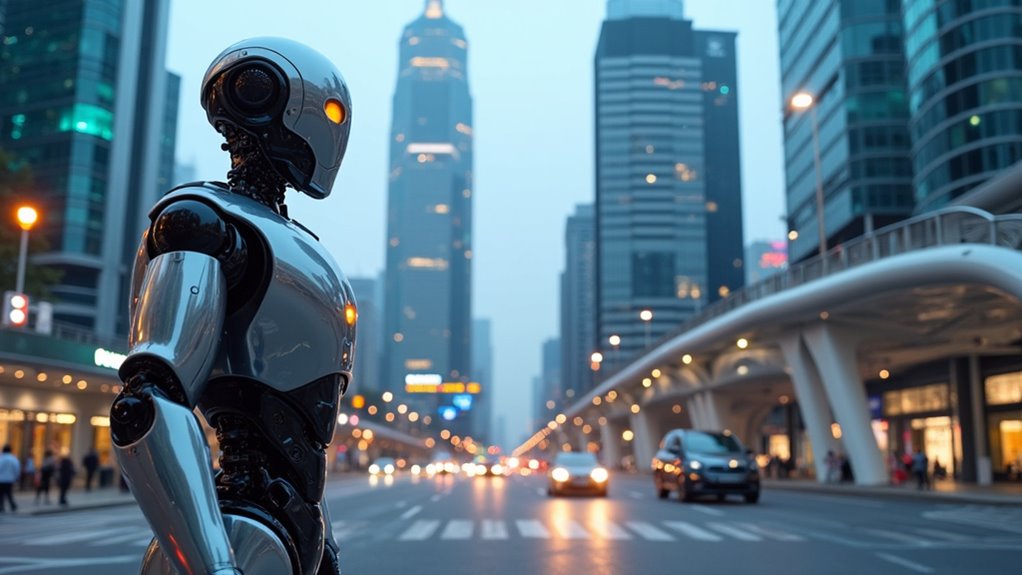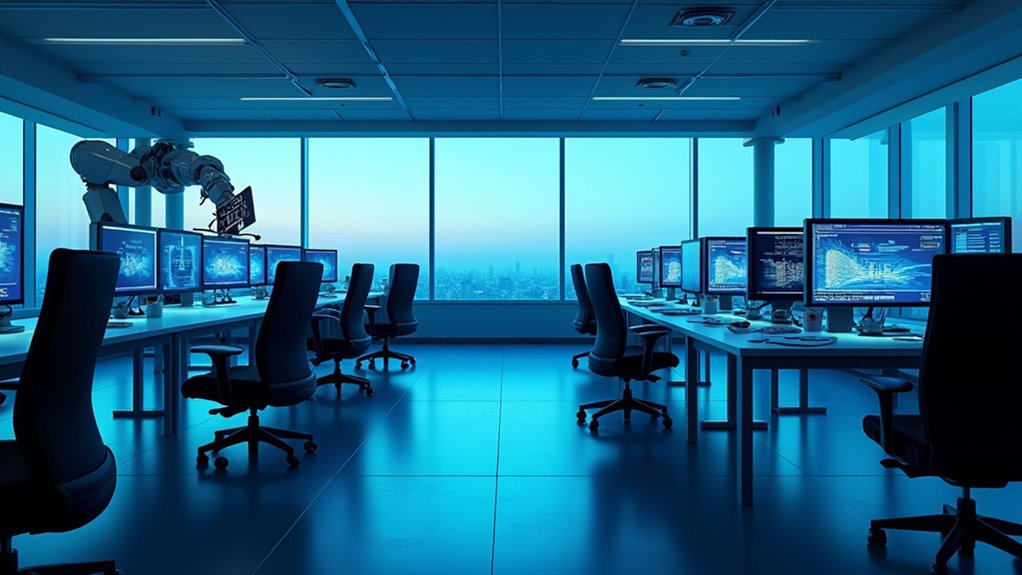Steel and circuits merge in China’s urban landscape as embodied AI robots become the new face of technological revolution. From Beijing’s bustling innovation centers to the manufacturing powerhouses of the Greater Bay Area, these mechanical marvels are no longer just sci-fi fantasies. They’re walking, working, and frankly, making some humans a bit nervous about their newfound capabilities.
Embodied AI robots roam China’s cities, transforming science fiction into reality while humans watch their rising influence with mixed feelings.
The Chinese government isn’t just watching from the sidelines – they’re throwing serious money at this robotic revolution. Cities across the country are funding embodied intelligence projects like proud parents at a science fair. The Beijing Embodied Artificial Intelligence Robotics Innovation Center (HUMANOID) stands as their crown jewel, a proof of China’s commitment to making robots that don’t just compute, but actually move and groove in the physical world. In Tangshan, an impressive hub of 222 robot enterprises showcases China’s dedication to advancing robotics technology. Recent projections show the market will reach RMB 300 billion by 2035, cementing China’s position as a global leader in robotics.
These aren’t your grandmother’s clunky robots. Modern embodied AI systems can perceive their environment, learn from it, and interact with all the grace of a seasoned pro. Well, most of the time. They’re handling complex tasks in everything from medical care to education, though they occasionally still bump into walls. Progress isn’t always pretty, but it’s definitely persistent. Like their autonomous vehicle counterparts, these robots utilize machine learning models to continuously improve their performance through real-world experience.
The impact on China’s urban landscape is impossible to ignore. Autonomous vehicles – practically robots on wheels – are cruising down streets while smart infrastructure adapts to support them. Public transit systems are getting an AI makeover, promising fewer traffic jams and cleaner air. Who knew robots could be environmentalists?
The economic ripples are spreading faster than a viral dance challenge. The humanoid robot market is booming, creating jobs in manufacturing and R&D. Yes, you read that right – robots are actually creating human jobs.
The Guangdong-Hong Kong-Macao Greater Bay Area has become ground zero for this transformation, leveraging its manufacturing muscle to pump out these mechanical workers. It’s a brave new world where circuits meet concrete, and China’s cities are leading the charge into this automated future. Ready or not, the robots are here to stay.





